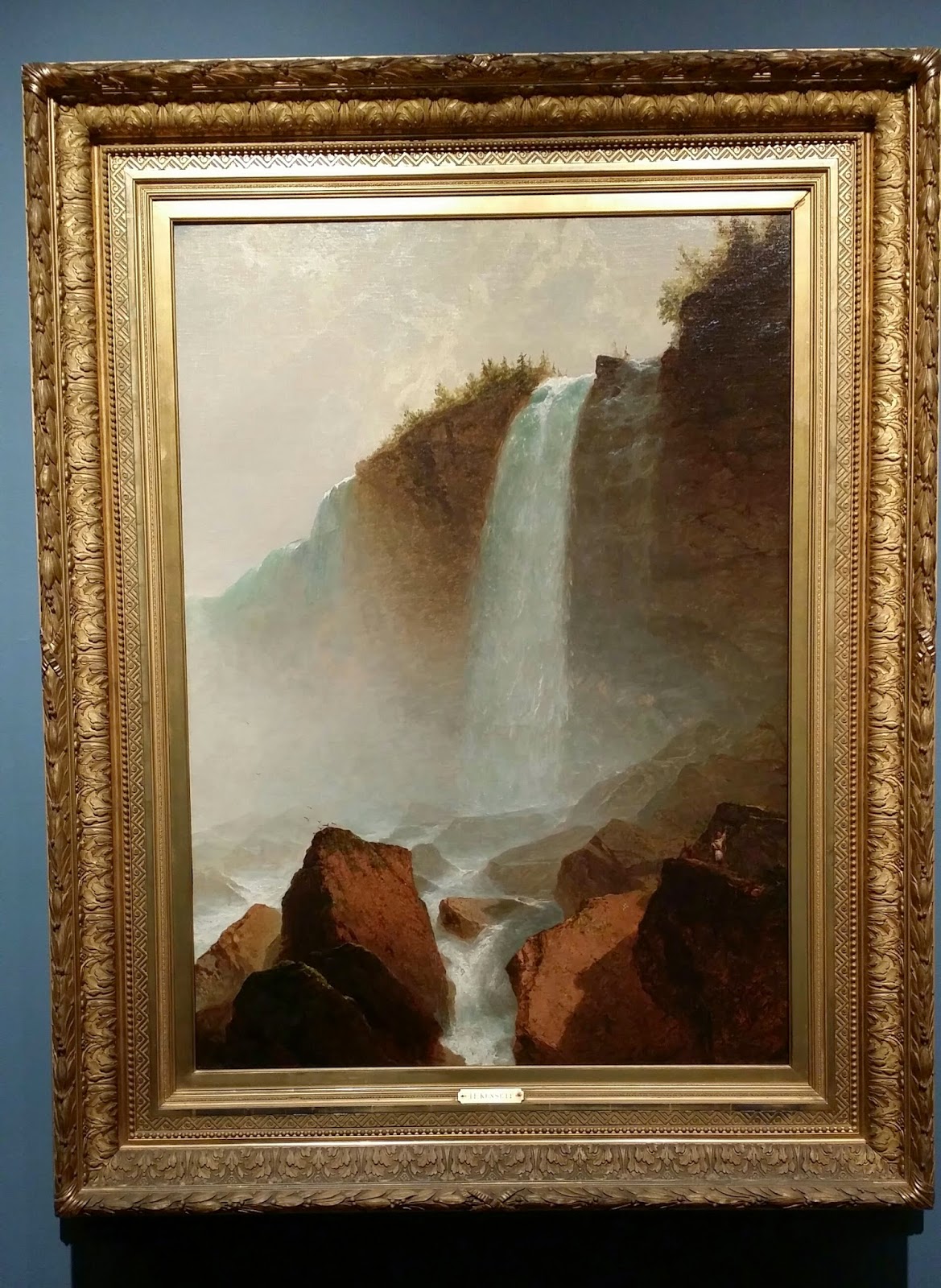For this trip I choose to go to the Wadsworth Atheneum Art Museum. Before going I did a little research on the museum. It is the oldest operating art museum in the United States. It is also the largest museum in Connecticut. The Wadsworth ( as it is known) was built on the estate of Daniel Wadsworth, he commissioned architects Alexander Jackson Davis and Ithiel Town to design the castle, which is the museum's oldest building. Through out the years four more wings have been added to it. Construction started in 1842 after the museum was incorporated on July 1st of that same year. But it wasn't until July 31, 1844 that the doors of the museum were open to the public. Since then it has continuously operated.
When it first opened the Wadsworth family contributed many pieces of art to the museum. The first collection consisted of 78 paintings, 2 marble busts, 1 portrait miniature and 1 bronze sculpture.
For this trip I travelled alone. The day was beautiful while I was driving to Hartford and traffic wasn't bad at all, no delays or traffic jams. Upon arriving I was lucky enough to find parking right in front of the museum and because it was Sunday, I did not have to pay for parking. The picture above does not do it justice, it truly looks like a castle from the outside. The people that greet you at the entrance are very pleasant and informative. I was able to get some information about the museum from the front desk and I also received a map of the museum with explanation on how to get to the different exhibits.
 |
| Neiman Studios, Inc. Chicago Jeanie, Living Half Girl, 1940 Sideshow banner |
When getting the information about the exhibits, I was told about the Amistad exhibit and about the Coney Island exhibit. After talking to the lady in the front I made my way to the Amistad exhibit. Along the way I saw a lot of pieces that were from American artist. The Amistad exhibit did not impress me. I thought that I was going to see artifacts from the Amistad ship but it was the complete opposite. The room where its located is sort of apart from the rest of the museum. The room is just for the Amistad. The room all it had was books, literature, poems by African American artists and other people that had something to say about the Amistad and of the plight of the African American people. After walking through and just seeing those things I decided to go to the Coney Island exhibit, which I had passed by when going to the Amistad exhibit.
The picture above is on the door leading to the Coney Island exhibit. Unfortunately, this was the only picture I was able to take because the guard on duty did not see me. When going inside the room I was amazed on all the art that was created based on the history of Coney Island. All the art was colorful and it told the story of Coney Island and the people that visited it. When I was ready to take another picture, the guard stopped me and told me that it wasn't allowed. I asked him why and he said that because the exhibit is on loan to the museum pictures were not allowed, which really disappointed me. The exhibit will be open until May 31, so if you have a chance, I recommend you go and see it.
 |
| Jacob C. Ward American, 1809-1891 Wolf in the Glen (Cattskill Falls). 1833 Oil on canvas |
After the Coney Island exhibit disappointment, I moved on to see if anything else interested me. I came upon this gallery that had American art from American painters. This gallery has paintings inspired by the scenery mainly of upstate New York and the Hudson River valley. These painters started a movement called the Hudson River School painters because that is mainly what they painted. They were led by the American painter Thomas Cole who was one of the first to focused his work on the landscapes of the Hudson valley and upstate New York.
 |
| John F. Kensett American, 1816-1872 Niagara Falls, 1855 Oil on canvas |
This painting is of Niagara Falls on the American side. The painter, Kensett visited Niagara Falls three times and he chose to paint the Luna Falls because of it was less dramatic. He also chose to portray figures of Native Americans on the lower right hand side of the painting.
 |
| Sanford Robinson Gifford American, 1823-1880 A Passing Storm in the Adirondacks, 1866 Oil on canvas |
This is a panting representing the passing of the Civil war. The artist experienced first hand the effects of the war being a corporal in New York's Seventh Volunteer Infantry Regiment. This is the calm after the storm and the sun shining through the clouds is the optimism that the artist seem to want to convey to the audience that even though we have been through something rough things will get better.

I'm glad you got to discover the paintings of the Hudson River School... They represent American Romanticism at its best. When we say Romanticism in landscape painting, we mean that there is salvation and redemption in the landscape... it is a healing, benign and utopian place. You alluded to that concpt in your discussion of the last piece.
ReplyDeleteNicely done....